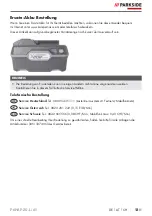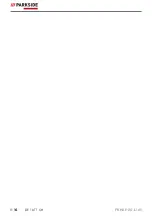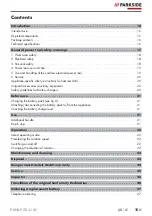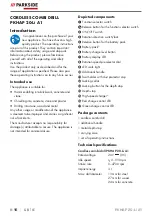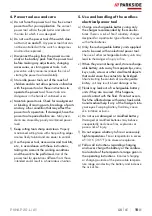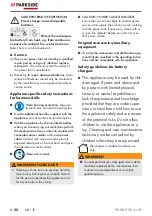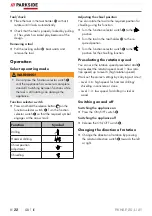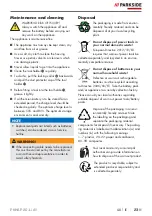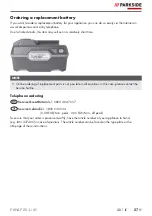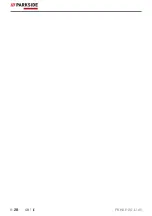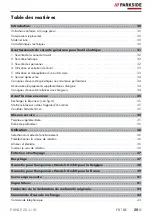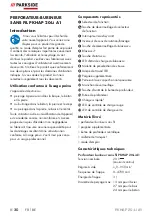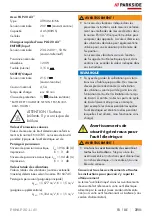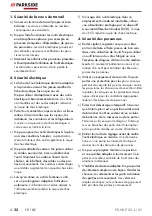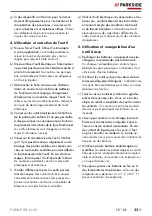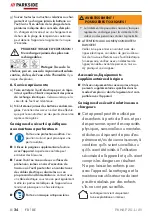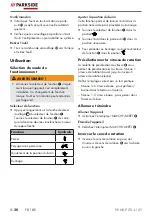
PKHAP 20-Li A1
GB
│
IE
│
23
■
Maintenance and cleaning
WARNING! RISK OF INJURY!
Always switch the appliance off and
remove the battery before carrying out
any work on the appliance.
The appliance is maintenance-free.
■
The appliance must always be kept clean, dry
and free from oil or grease.
■
Use a soft, dry cloth to clean the housing.
Never use petrol, solvents or cleansers which
can damage plastic.
■
Never allow liquids to get into the appliance.
■
Clean the tool holder
-
regularly.
♦
To do this, pull the locking collar
3
backwards
and pull the dust protector cap off the tool
holder
-
.
♦
Before fitting a tool into the tool holde
-
,
grease it lightly.
■
If a lithium-ion battery is to be stored for an
extended period, the charge level should be
checked regularly. The optimum charge level is
between 50% and 80%. The optimum storage
environment is cool and dry.
NOTE
►
Replacement parts not listed (such as batteries,
switches) can be ordered via our Service
hotline.
WARNING!
■
If the connecting cable needs to be replaced,
this must be carried out by the manufacturer
or an authorised representative in order to
avoid safety hazards.
Disposal
The packaging is made from environ-
mentally friendly material and can be
disposed of at your local recycling
plant.
Do not dispose of power tools in
your normal domestic waste!
European Directive 2012/19/EU
requires that worn-out power tools be
collected separately and recycled in an environ-
mentally compatible manner.
Do not dispose of batteries in your
normal household waste!
Defective or worn-out rechargeable
batteries must be recycled according
to Directive 2006/66/EC. Take the battery pack
and/or appliance to a nearby collection facility.
Please consult your local authorities regarding
suitable disposal of worn out power tools/battery
packs.
Dispose of the packaging in an envi-
ronmentally friendly manner. Note
the labelling on the packaging and
separate the packaging material
components for disposal if necessary. The packag-
ing material is labelled with abbreviations (a) and
numbers (b) with the following meanings:
1–7: plastics, 20–22: paper and cardboard,
80–98: composites.
Your local community or municipal
authorities can provide information on
how to dispose of the worn-out product.
The product is recyclable, subject to
extended producer responsibility and
is collected separately.
IB_337406_PKHAP20LiA1_LB8.indb 23
10.08.20 15:35
Содержание PKHAP 20-Li A1
Страница 3: ...A ...
Страница 18: ...PKHAP 20 Li A1 14 DE AT CH ...
Страница 32: ...PKHAP 20 Li A1 28 GB IE ...
Страница 48: ...PKHAP 20 Li A1 44 FR BE ...
Страница 62: ...PKHAP 20 Li A1 58 NL BE ...
Страница 90: ...PKHAP 20 Li A1 86 CZ ...
Страница 104: ...PKHAP 20 Li A1 100 SK ...





